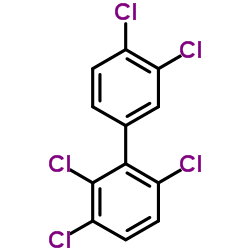| Structure | Name/CAS No. | Articles |
|---|---|---|
 |
2,3,3',4',6-PCB
CAS:38380-03-9 |
A Ruus, J U Skaare, K Ingebrigtsen
Index: Environ. Toxicol. Chem. 20(10) , 2377-82, (2001)
Full Text: HTML
The disposition and depuration of lindane (gamma-hexachlorocyclohexane [HCH]) and polychlorinated biphenyl (PCB)-110 (2,3,3',4',6-pentachlorobiphenyl), orally administered to cod (Gadus morhua) and bullrout (Myoxocephalus scorpius), were investigated using whole-body autoradiography, liquid scintillation counting, and gas chromatography with electron-capture detection. Both gamma-HCH and PCB-110 were distributed mainly to lipid-rich organs after absorption from the gastrointestinal tract of cod and bullrout. Compared to bullrout liver, the cod liver contained higher concentrations of both compounds, reflecting the distribution of fat in the two species. In both species, the depuration time for gamma-HCH was shorter than for PCB-110. Both substances were excreted via bile and urine, largely as water-soluble metabolites. The water-soluble bile metabolites, together with PCB-110 metabolites associated to endogenous macromolecules, strongly indicate that this compound is metabolized in both species.
| Structure | Name/CAS No. | Molecular Formula | Articles |
|---|---|---|---|
 |
2,3,3',4',6-PCB
CAS:38380-03-9 |
C12H5Cl5 |
|
Persistence of 2,3,6-substituted pentachlorobiphenyls in the...
1981-01-01 [Toxicology 21(4) , 317-22, (1981)] |
|
Hepatic enzyme induction and acute endocrine effects of 2,3,...
1998-07-01 [Arch. Environ. Contam. Toxicol. 35(1) , 97-103, (1998)] |
|
Polychlorinated biphenyls (PCBs) and their congener-specific...
2002-08-01 [Food Addit. Contam. 19(8) , 779-95, (2002)] |
Home | MSDS/SDS Database Search | Journals | Product Classification | Biologically Active Compounds | Selling Leads | About Us | Disclaimer
Copyright © 2024 ChemSrc All Rights Reserved